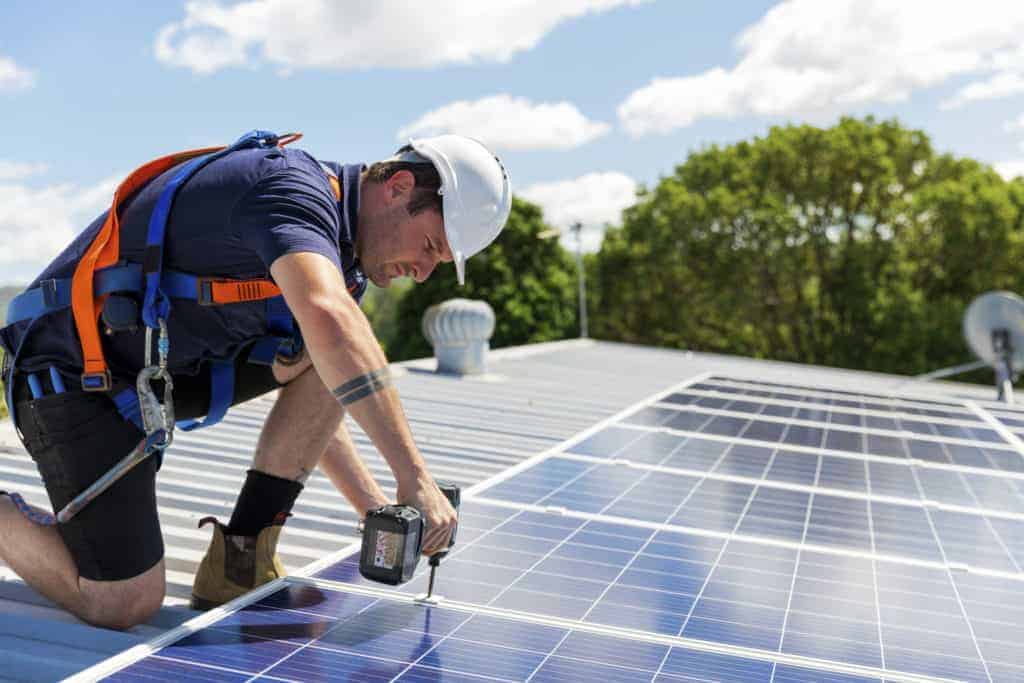The thought of investing in a commercial solar energy system may seem impossible for your business or organization at this time. At EnergyLink, we know that times are financially tough for many people and we want to help you find a solution. By utilizing one of the solar funding options addressed below, you could install a solar system with no upfront cost and experience positive cash flows from day one. Here’s how:
1. C-PACE Financing Program
C-PACE (Commercial Property Assessed Clean Energy) is a financing program for businesses that want to install energy efficient or renewable energy improvements to their building. If you own commercial real estate and want to install solar arrays in a cost-effective way, CPACE may be a good option.
Similar to other solar financing methods, C-PACE borrows capital from C-PACE providers to pay for the construction costs and the installment of a new energy system. One of the best parts of the C-PACE program is that there are no upfront payments. This means after the installation of the energy project, business owners enjoy energy savings from day one. Every year after the project, business owners will pay the C-PACE provider back in the form of property tax. The average project is paid off in 20 years although the payment plan timeline depends on the commercial property.
C-PACE is becoming an increasingly attractive option for commercial building owners desiring solar as it leads to lower utility bills and oftentimes an increased property value. Overall, C-PACE is an innovative solution that allows property owners to install a solar energy system without having to drain working capital, all while giving them the flexibility to pay back the financing over a term that coincides with the life of the upgrades. For more information on how C-PACE works and if your company qualifies, check out our blog post that covers everything you need to know.
Who Should Consider This?
According to the U.S. Department of Energy, C-PACE is a good fit for the organizations that:
- Is located in a jurisdiction with C-PACE programs
- Wants long-term financing (over 10 years) with longer monthly payments
- Wants to invest in long-term improvements to building resiliency and reliability
- Does not plan to own or occupy its facilities long-term
- Is interested in improving their organization’s sustainability
2. Rebates
Another way to receive funding for a solar project is through rebates. If your company or organization wants to save 10-20% on your solar installation, a rebate may be the perfect option.
A rebate is a sum of money paid by your local utility company to help you purchase a renewable energy system or energy-efficient technology. Rebates typically subsidize costs for solar panels as well as other energy-efficient technology such as building automation systems, lighting retrofits, HVAC upgrades, and energy-efficient water heaters. Ultimately, it makes your project more affordable upfront and it shortens the payback period.
In order to receive a rebate, a company or organization must apply. At EnergyLink, we know how stressful this process can be so we handle the application process for all of our clients. That’s right, no work on your end! Our team will work with your organization’s utility provider to facilitate applying for and receiving all renewable energy and energy efficiency rebates. To learn more about rebates and how to obtain one, check out this blog post.
3. Solar Tax
The solar tax, a type of investment tax credit, is also a great resource to lower the cost of solar. But, with the tax credit declining each year, it is important to move quickly on this one to receive the most savings.
The solar investment tax credit is a tax credit that can be claimed on federal corporate income taxes for 26% of the cost of a solar photovoltaic (PV) system commencing construction on or before December, 31st 2020. Each year, the tax credit will decrease as shown below.
- 2020: 26% tax credit
- 2021: 22% tax credit
- 2022 onward: new commercial solar energy systems can deduct 10%. No federal credit for residential solar
Check out this blog post to see if your business could qualify for this tax.
Contact Us
At EnergyLink, we are committed to helping our clients find energy-saving solutions even in this challenging time. For more information on how to finance a solar energy system during this time, contact us! To learn more about other financing options not addressed in the post, click here.






